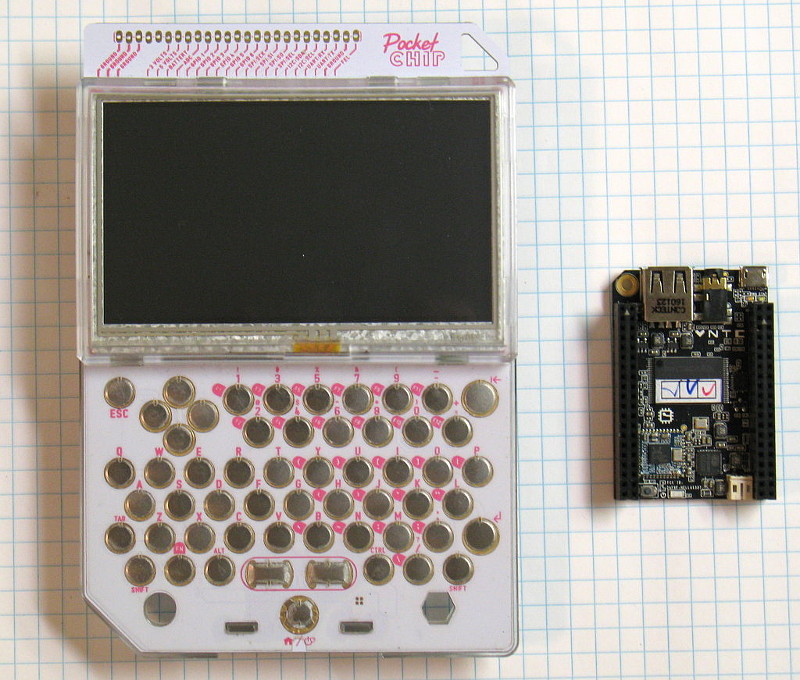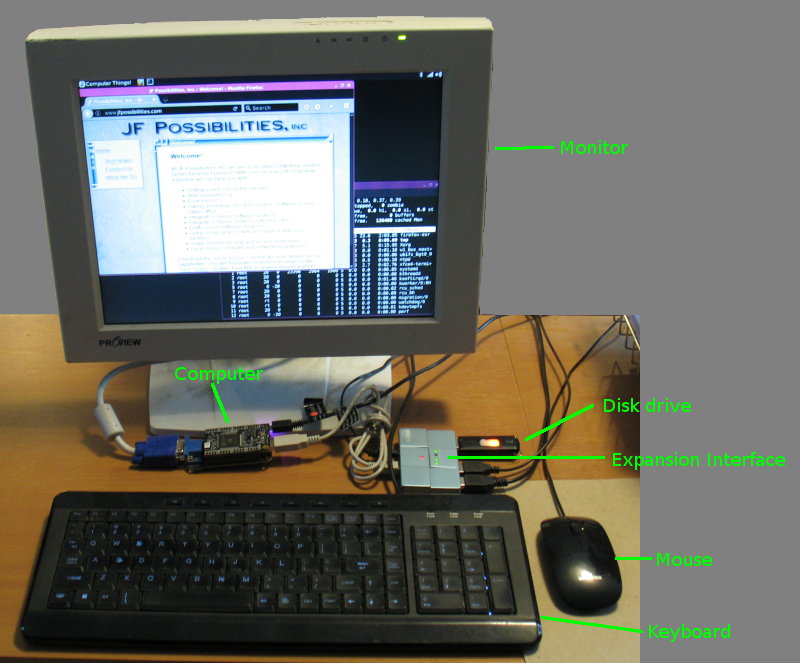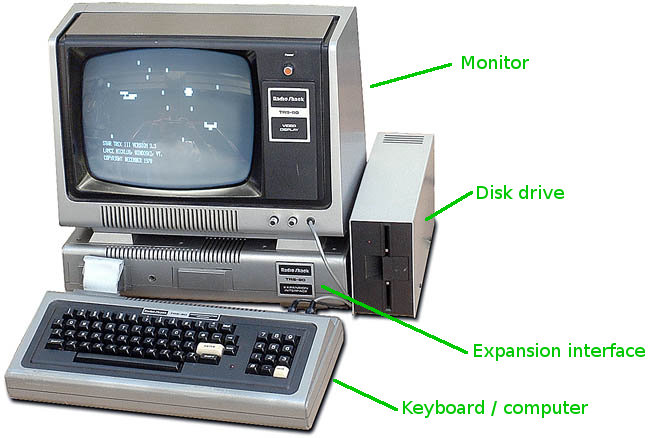The C.H.I.P. is dead... or is it?
by Jon Foster
-
2018-06-15
Updated: 2021-04-13

Update: "Source Parts" is releasing a clone soon (~June 2021). Its called the "Original Popcorn Computer". It can be ordered from their store. Be warned! It is 5.5x the price @ $49.  But their Pocket P.C. looks more interesting.
I'm going to try and keep this short... there is a whole highway system of "rabbit trails" I could get caught up in. Unfortunately like many other good tech devices and software, Next Thing, Co. (NTC) has died and by extension the C.H.I.P. and PocketCHIP... or have they? It is "Open Source" hardware so someone else could carry on.
The thing I like about the PocketCHIP (left part of image) is that it was a full-on computer that fit in your hand. Not at all like the iPhone, iPad, Android, ... devices which treat the user as a villain and lock them in a security straight jacket. I write software on this device. I track my on-site time. I interface to MySQL DB servers, perform network diagnostics and penetration testing. I even have "ROOT" access!!  It runs Debian like my desktop computer and other than processing power and screen size limitations (PocketCHIP only) it can run all the same software. I even use the C.H.I.P. (right side of photo, without the PocketCHIP) to provide a VNC desktop to make my iPad useful. It runs Debian like my desktop computer and other than processing power and screen size limitations (PocketCHIP only) it can run all the same software. I even use the C.H.I.P. (right side of photo, without the PocketCHIP) to provide a VNC desktop to make my iPad useful.
The C.H.I.P. is a Single Board Computer (SBC) like the RaspberryPI and many others that have flourished. The C.H.I.P. plugs into the back of the PocketCHIP to provide the compute power. The things it does that are different from the other SBCs I've looked at are:
- The C.H.I.P. alone was only $9. PocketCHIP was $79. Probably why its dead.
- Power management, or more specifically battery management (charging, protection, ...).
- Direct TFT LCD interface.
- Resistive touch interface.
- Onboard flash. Actually I'm fine with using uSD card, instead. Flash dies. Its nice to be able to replace it.
- 80 pins of I/O!
- A real USB OTG port, not just a power connector. It has useful functions like: serial term and network interface to the host.
Items 2-3 made it ideal for small portable applications. But many devices, even printers, have touch screens that would need #3 & 4 if I were to use an SBC to implement something like it. If those display and touch screen facilities weren't needed the amount of pins available to communicate with outside devices (GPIO) was large. In short, although not nearly the most powerful, it was the most flexible SBC I've seen to date. They also had inexpensive adapters to run VGA or HDMI monitors.
Well... I won't delve too deep into why I think this was a fantastic device. But needless to say I'm sad to see it go.  For those of us that were in to this device I've setup mirrors of much of the related data and software on my server. You can find it at chip.jfpossibilities.com. The mirror contains the following: For those of us that were in to this device I've setup mirrors of much of the related data and software on my server. You can find it at chip.jfpossibilities.com. The mirror contains the following:
I grabbed copies of these things before the NTC servers fell off-line. This page is basically here to point people to the copies if they are needed. I'm maintaining them so I can keep the handful of CHIPs and the PocketCHIP that I own running as long as I can.
Also of note: The CHIP wiki will remain up for some time since its a community sponsored site.
Moving forward I'll be looking for another real portable computing solution...
Here is the C.H.I.P. as a desktop computer with a VGA monitor:

That photo is actually a tongue-in-cheek comparison to my first computer from the mid '70s. The "expansion interface" is really a compact USB hub. The "disk drive" is a USB thumb-drive. This is what my TRS-80 Model I - level 2 looked like:

I ended up with a stack of three of those floppy drive cabinets! We turned them on their sides and stacked them on top of one another. Otherwise they ate a lot of desk real estate! With a swap to Tandon from the original Shugart drives and some disk parameter tweeks via "Dos Plus" we could put 800KB on a disk. It was really hard to get used to the midget IBM PC drives of only 360KB. But then the USB thumb drive at only 8GB is nearly 10,000 times larger!
|




 M
M





 The C.H.I.P. is dead... or is it?
The C.H.I.P. is dead... or is it?




















